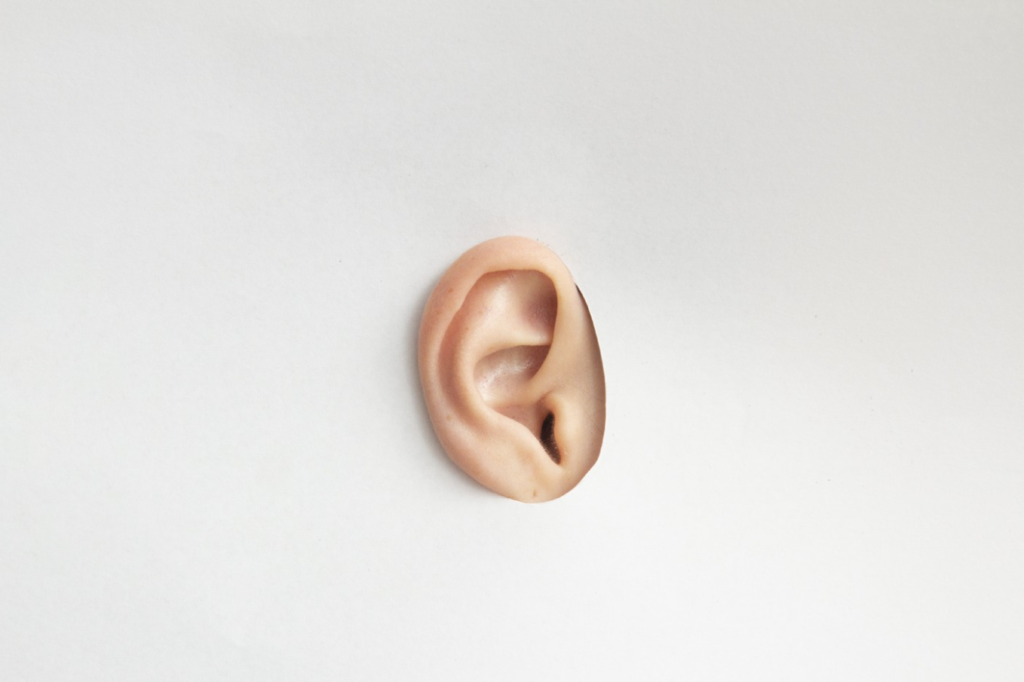Tips on designing inclusively for auditory/hearing disabilities
By Blayne Phillips | UX Collective, April 13
Their problems, behaviours, needs & tools, plus design guidelines for building accessible products.

In my article “The three levels of accessibility”, I mention the importance of designing for clarity and inclusivity. Not only to ensure everybody regardless of ability is able to access your site but so that developers can implement accessible code.
I will be discussing the various problems people face, their unique behaviours and needs, the tools they use, and how we can better accommodate them in our digital products. I’ve broken it into 5 sections across 5 articles:
- Cognitive/Neurological
- Auditory/Hearing
- Visual
- Physical
- Speech
Auditory/Hearing
When talking about users with auditory problems most of us would think of deafness and hearing loss. There are other disabilities and conditions, for example, some frequencies can be difficult or painful to hear. Let’s not also forget that certain environments restrict our ability to listen to audio or hear sounds regardless of ability. This can include being on noisy public transport or sitting on a sofa while your family or friends are watching TV.
As UX Designers we need to educate the team during discussions and to consider these conditions when designing interfaces.
Here are a few examples:
- Deafness— severe or profound hearing loss
- Hard of hearing — mild or moderate hearing loss
- High-frequency hearing loss — difficulty in understanding high voices
- Hyperacusis — sensitivity to certain frequencies/volumes
- Loud environments — can’t listen to audio
- Low-frequency hearing loss — difficulty in understanding low voices
- Tinnitus —a ringing or hissing noise that can be permanent
- And more…
Behaviours & needs
Hearing-impaired users require physical or visual communication alternatives to audio. They will look for transcripts, volume controls, subtitles, or sign language while engaging with media content. These will be expected to be in simple language especially for those who aren’t fluent. Contacting a business’ phone number is their least preferred method and potentially not possible as a means to communicate so these users prefer online chats and email.
Problems
Inaccurate, missing captions and transcripts, low-quality and quiet audio are all barriers for them. A lot of the time sub-titles are not up to scratch, for example, using AI to auto-caption content can be a terrible experience due to speech nuances and slang resulting in its accuracy rating of below the standard 99%. We have all laughed at a caption that doesn’t translate correctly or is out of sync with the video. Some users won’t be fluent in their respective language either, so can be frustrated with complex subtitle text.
Tools
To help, these users use tools like:
- Headphones
- Hearing aids
- Sign language
- Subtitles
- Transcripts
- Volume controls
Inclusive design tips & tricks
Here is some advice on designing inclusively for anyone with hearing issues:
Audio & video
- Provide text-based equivalents for audio files on the same page via transcripts (videos, podcasts, etc.)
- Use captions and subtitles on videos, preferably generated by humans, not AI/bots
- Convey who is talking in subtitles, transcripts, etc.
- If budget and skillset allow, provide sign language on videos (sign language expert, recording it, and video editing)
- Use simple plain language for those who may not be fluent (deaf from birth, second language, etc.)
- Ensure audio is loud and clear by following these standards (use the correct decibel levels)
- Ensure audio is of high quality by avoiding poor mics, unclear or explosive sounds, floor/desk vibrations, wind noise, and more…
- Clearly distinguish foreground noise by removing or reducing any background noises
- Make sure content has volume controls including the ability to mute/unmute etc.
Notification sounds
- Provide alternatives to audio-only notifications/alerts (using physical or visual alternatives)
Contact methods / Communication
- Provide multiple forms of communication (not just phone!)
As are these articles:
Up next
I’ll be discussing how to design inclusively for visual disabilities. The problems they face, their behaviors and needs, the tools they use, and how we can design to include them. If you found this article helpful and are interested in the next 3 on the various disabilities, press Follow and stay tuned.
A Life Worth Living has copied the content of this article under fair use in order to preserve as a post in our resource library for preservation in accessible format. Explicit permission pending.
Link to Original Article: https://uxdesign.cc/tips-on-designing-inclusively-for-auditory-hearing-disabilities-faf5a7b2ae40

